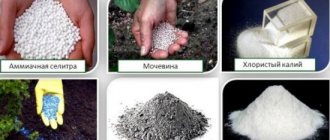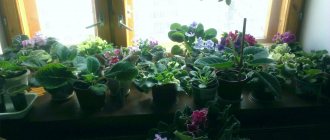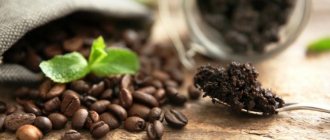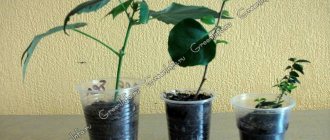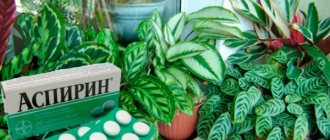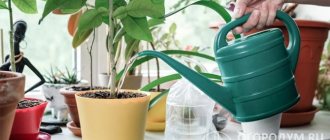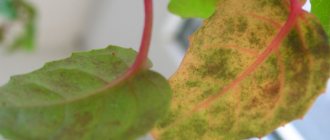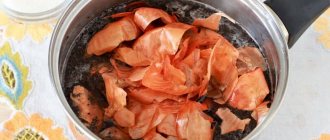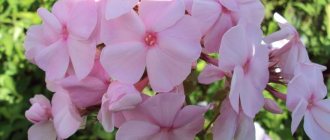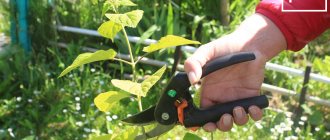Already at the end of February, even in areas with cold winters, the sun begins to warm up and daylight hours lengthen. At this time, you can begin to fertilize indoor plants that are beginning their growing season. A lack of nutrients can cause the flower to grow slowly, begin to stretch, wither, and may not bloom. Plants need nutrition, especially during growth and flowering. How to feed indoor flowers at home in spring and summer, what fertilizers and folk remedies are best to use for feeding, you can learn from our article.
Signs of lack of fertilizer
Even if your indoor flowers look good after wintering and grow well, they definitely need to be fertilized in the spring. To do this, you can use special ready-made fertilizers, which are sold in specialized stores, or prepare fertilizers yourself from natural products.
Attention! Indoor plants that were transplanted into new soil in the spring (or summer) do not need to be fed for two months, since fresh soil contains all the necessary nutritional components for growth and development.
Signs that your flower definitely needs feeding are:
- weak and elongated shoots;
- slow growth;
- small and pale leaves;
- unhealthy appearance of the bush;
- lack of flowering;
- dropping buds;
- due to poor resistance, pests appear on the plant and it is susceptible to diseases.
But, even if these signs are not present, at the end of February - beginning of March, home flowers should be washed under a warm shower and fertilizing should begin.
Functions
Each vitamin has its own effect, but ultimately, vitamin deficiency always manifests itself externally in slower growth, the appearance of smaller leaves, shedding of buds, inflorescences, leaf blades and unripe fruits.
But scientists have clearly defined the role of each such substance in plant life.
Group B
The compounds that are combined into this large group differ from the rest in that their formula contains a nitrogen atom:
- B1 (thiamine ). Necessary for normal tolerance of stressful conditions and stimulation of flower growth. Helps to use energy efficiently and accelerates the circulation of intercellular fluid. It is considered the best antioxidant for indoor crops. Strengthens the branching of the root system.
- B6 (pyridoxine ). Activates the immune system, makes it possible to strengthen weakened or diseased inflorescences. The need for it increases sharply during recovery from viral or fungal diseases. It is also recommended to use pyridoxine immediately after insect control treatments. Gives excellent results for fruiting indoor plants such as lemons, kumquats, pomegranates, etc.
- B12 (cobalamin) . Necessary for the production of chlorophyll, ensures normal absorption of substances and metabolism, accelerates growth. Saturates cells with oxygen, comes to the rescue during long rainy or cloudy periods when plants suffer from lack of sunlight.
Ascorbic acid
Vitamin C is no less important for flowers than for people. It participates in respiration processes, acting as an intermediate catalyst for redox processes in tissues. Its main function is the transfer of hydrogen from the cell to the intercellular fluid. Resistance to negative environmental factors and various infections with a lack of ascorbic acid is sharply reduced. This substance helps in the fight against chlorosis; it allows flowers to neutralize harmful ultraviolet rays.
RR
This name hides the usual vitamin B3 or nicotinic acid. Used after a long period of depression for rapid recovery. It is considered a kind of “reanimation” for indoor flora that have experienced drought, suffered from intense light, or have been in a cold room for a long time. Gives impetus to the development of reproductive organs.
What elements do flowers need?
For development, growth, and flowering, domestic flowering and decorative foliage plants require the following elements:
- potassium increases resistance to cold, helps to absorb certain microelements, and is responsible for flowering;
- phosphorus - the element is responsible for the process of plant development and for flowering, which, if it is deficient, may not occur at all or will not be very abundant;
- nitrogen is necessary for the development of foliage, without it the leaves lose their color and fade (an excess of nitrogen leads to a lack of flowering);
- calcium is involved in nitrogen and carbon metabolism, and its deficiency prevents young leaves from developing and weakens root growth;
- sulfur is important for leaves, which without this element will begin to wither;
- Magnesium is responsible for photosynthesis, so if it is deficient, the leaves turn pale.
In addition, elements such as boron, copper, manganese, molybene, and iron are no less important for home flowers.
Hypervitaminosis
When using vitamin supplements, you need to be very scrupulous about dosages and timing of application. The fact is that with an excess of these substances, plants begin to develop hypervitaminosis, which very quickly leads to the opposite effect: at first the flower grows actively and seems healthy, but soon the growth stops and then stops altogether. If you continue to inject such solutions, the specimen may die. Visual manifestations of hypervitaminosis may include brown spots on the leaves near the midrib.
To prevent such developments, inexperienced flower growers are advised to give preference to ready-made preparations, which are diluted in accordance with the instructions on the package or bottle.
Types of fertilizers for plants
It is most convenient to buy special fertilizers, which are available in several types:
- Liquid organic and mineral fertilizers for home flowers are easy to dilute and can be used for both root and foliar feeding.
- Complex mineral fertilizers in powders are also easy to dilute and contain many different nutrients.
- Fertilizers for plants in the form of tablets, sticks and capsules have a prolonged action. This means that they are placed in the soil, where they dissolve slowly when watered and therefore act for a long time.
You will be interested to know: Autumn fertilizing in the garden of fruit trees and shrubs: fertilizers for a good wintering
Organic fertilizers for plants
It is not very convenient to feed indoor flowers at home with nutrient-rich manure or humus, since they have a specific smell. The easiest way is to buy ready-made fertilizers in a specialized store, which can be universal or intended for a specific type of flower:
- The ideal is a universal fertilizer based on vermicompost, which also contains microelements. They can be used to feed both home and garden crops.
- Watering can is an organo-mineral liquid fertilizer for decorative flowering indoor, balcony and garden plants.
- Bio-Bloom is an organic fertilizer, the use of which improves growth and flowering.
There is no point in listing all fertilizers, since today there are a large number of them. Therefore, you can easily choose what you need for your green pets.
Mineral fertilizers for plants
During the growing season, that is, from spring to late autumn, it is recommended to feed home flowers with both organic and mineral fertilizers. To do this, it is advisable to alternate them.
In spring, it is recommended to apply nitrogen fertilizers, which will help the flower begin to develop and grow foliage.
Among the complex mineral fertilizers we can highlight:
- Fertika Lux is a powder that dissolves quickly and contains many useful elements.
- Agricola is a mineral supplement that can be sold both in liquid and powder form.
- Zdraven turbo is a fertilizer that quickly dissolves in water and contains 10 elements necessary for indoor and garden crops.
- AVA is a complex nutrition with all the micro- and macroelements that are necessary for the development and growth of plants.
- Growth Power – chlorine-free fertilizer for indoor flowers with microelements.
This is a small part of the list of mineral fertilizers that flower shops offer.
When choosing a mineral fertilizer, remember that in the spring it should contain more nitrogen, and in the summer - potassium and phosphorus.
Forms
Vitamins are often included in complex fertilizers or stimulants sold in flower shops. But you can also use pharmaceutical drugs, since in this form they are much cheaper.
All vitamin groups are divided into fat-soluble and water-soluble. The plant organism absorbs and transports mainly water-soluble ones. These include the following categories:
- complex B;
- C (ascorbic acid);
- PP (nicotinic acid).
The need for these compounds differs at different stages: for example, during seed germination the most vitamin preparations are needed, but they are synthesized inside the seedlings themselves, since the plant is not yet able to take them from the outside due to the lack of suction roots. Also, when growing in unfavorable conditions, a flower may need more than when living in a good environment.
Natural fertilizers
You can feed indoor flowers with folk remedies using natural products.
Feeding flowers with sugar
The glucose contained in sugar is an excellent building material and source of energy, therefore it is very useful for plants. However, without carbon dioxide it is not absorbed and can lead to the formation of mold in the soil and rotting of the roots. To prevent this from happening, it is recommended to use EM preparations containing microorganisms along with sugar. This could be Vostok EM-1 or Baikal-EM-1.
It is fashionable to use sugar to fertilize flowers in two ways:
- The plant is watered with a solution of 1 tablespoon of sugar and 1 liter of water. Additionally, the soil is fertilized with an EM preparation diluted according to the instructions.
- Sugar is poured on top of the soil at the rate of 1 teaspoon per 10 cm of pot diameter. On top of the sugar, the soil is watered with a solution of an EM preparation.
Instead of sugar, you can use ready-made glucose by dissolving 1 tablet in 1 liter of water.
Attention! The frequency of feeding with glucose and sugar should be no more than once a month!
Wood ash for plants
Wood ash is very beneficial for all plants. It can be used as a top dressing for home flowers and garden crops. This is explained by its rich mineral composition. Ash contains:
- calcium;
- zinc;
- magnesium;
- sulfur;
- iron;
- phosphorus.
In addition to its rich mineral composition, ash is also valuable because it disinfects the soil.
You will be interested to know: Cow and horse manure as organic fertilizer: how to apply, process and store
There are two ways to use wood ash for fertilizing:
- Dry feeding . Before planting plants or flowers, ash is mixed with soil in a ratio of 1:50.
- Liquid feeding. Within a week, it is necessary to infuse the ash solution by dissolving 3 tablespoons of ash in 1 liter of water. It is recommended to use this fertilizer for watering flowers once every two weeks.
Which flowers should I feed with ash? All indoor plants love it, but cyclamen, fuchsia, geranium and begonia respond especially well to such feeding.
Fertilizing flowers with yeast
The use of yeast as fertilizer will help indoor plants develop fully and actively. The hormones and B vitamins they contain contribute to this. Yeast can be compared to full-fledged mineral fertilizers, since fertilizing with them has the following effects:
- increase the activity of microorganisms in the soil;
- produce phosphorus and nitrogen;
- accelerate the mineralization of organic substances;
- increase the release of carbon dioxide.
Mode of application:
- Live yeast. You need to dilute 200 grams of pressed yeast in a liter of water, put the solution in a warm place and let it brew for at least 2 hours. After this, the yeast solution can be used for fertilizer, after diluting it with water 1:10.
- Dry yeast. A packet (10 grams) of yeast and 3 tablespoons of sugar are diluted in 10 liters of warm water. The solution should sit in a warm place for one or two hours. If the resulting volume is large, then you can dissolve 1 gram of yeast in a liter of water. But in any case, before watering the flowers, the solution will need to be diluted in water in a ratio of 1:5.
Houseplants are fed with yeast solutions once a season, that is, in the spring before flowering, in the summer during flowering and in the fall after flowering. The fertilizer is valid for about two months.
Attention! Yeast is able to absorb potassium, so it is recommended to feed the flowers with ash along with them!
Only a fresh solution should be used, otherwise a pathogenic environment will begin to develop in the soil.
Succinic acid for indoor flowers
The acid obtained from processing natural amber has many useful properties.
However, for plants it is used not as a fertilizer, but as an auxiliary additive, the use of which strengthens the immune system and helps absorb nutrients. Mode of application:
- Dissolve one powder or tablet of the drug in one liter of warm water.
- Use the resulting solution to water the soil in the pot or spray the leaves of the plant. It will be suitable for use within three days.
- You can soak seeds and flower cuttings in the solution.
- The amber solution can be used no more than once a year. Succulents and cacti are fed with it once every two or even three years.
Chlorophytum, oleander, prickly pear, begonia, crassula, ficus, arrowroot, aglaonema, and citrus fruits respond well to fertilizing with succinic acid.
Iodine for plants
Many people will probably be surprised, but iodine can be used as a fertilizer for houseplants. It is not an important element in their life, but an iodine solution will help the flowers grow and bloom more intensively and protect them from fungal diseases.
Application:
- Dilute 1 drop of iodine in 1 liter of water;
- Attention! The concentration of the solution cannot be increased, otherwise the plant may be destroyed;
- the day before applying iodine fertilizer, it is recommended to water the flower with clean water;
- the resulting solution should be poured along the edge of the pot so as not to burn the roots.
It is recommended to use iodine supplement once every three months in spring and summer. Withering and weakened plants can be watered once every 10 days.
Spilled coffee
If you are a lover of natural coffee, then after drinking the aromatic drink, do not throw away the coffee grounds, as they can be used to fertilize your home flowers. Of course, dormant coffee does not saturate the soil with any nutrients, however, after adding it, the soil will become lighter and looser, due to which oxygen will penetrate into it more easily and acidity will increase.
But it is worth remembering that not all flowers like high acidity in the soil, so it is recommended to use coffee grounds as a top dressing for azaleas, rhododendrons, roses, lilies, gladioli and many decorative foliage plants.
Fertilizers for home flowers from vegetables and fruits
Even vegetables and fruits can be used as fertilizer for indoor plants:
- Onions are an excellent protector of home flowers from pests and diseases . And its husk contains many microelements. The plants are fed with infusion, which is prepared from a liter of boiling water and a handful of husks. The solution is boiled for about 10 minutes over low heat, after which it is infused for another 3 hours. Before use, filter the solution and spray (do not water!) the top layer of soil in the pot. It is recommended to use twice a month.
- An infusion of orange and tangerine peels will strengthen the immunity of plants and protect them from diseases and pests. An infusion is prepared from crushed crusts, which should be filled with a third of a liter container and filled with water so that the jar is completely filled. After a day, the infusion is filtered, after which water is added to the jar to a liter volume. In spring and summer, flowers are watered with citrus infusion 2 times a month, and in autumn and winter - once a month.
- Banana peels contain many nutrients, especially potassium . It can be used to make the same infusion as from citrus peels or used as a powder. To do this, banana peels need to be washed, dried well and chopped in a blender. The resulting powder is poured on top of the soil and watered with water. You can use this fertilizer once a month.
You will be interested to know: How to feed Decembrist for abundant flowering - effective feeding
Compositions for various occasions
Experienced flower growers are not limited to feeding a plant with one vitamin; they know the secret in which cases to use a vitamin complex and what to make it from:
- To resuscitate home flora and grow roots, a cocktail of the vitamin group: B6 + B12 is used. One ampoule of each vitamin per 1 liter of water. Some gardeners add 4 tablets of succinic acid.
- During the growing season: B1+B3 with the addition of a small amount of aspirin. Used as a spray for 2-4 weeks.
- For transplantation, a mixture of B6+ B12 with the addition of zircon is used.
When preparing cocktails, you must follow the compatibility rule: do not mix B1 with B12, and B3 with B6. Two or more vitamins are mixed. The water for cooking is settled, the temperature is 25 degrees.
Rules for applying fertilizing
Before you start fertilizing your home flowers, study the rules for applying fertilizers so as not to harm your plants:
- Before applying fertilizer solutions, it is recommended to water the soil about a day with clean water. This procedure will protect the roots from burns.
- Transplanted plants should be fed no earlier than after two months.
- Flowers affected by disease or pests cannot be fertilized. They must first be cured and pests removed.
- All fertilizers must be used only according to the instructions. Their excess can lead to negative consequences.
- Not all plants are suitable for universal fertilizers, so for some flowers there are special fertilizers. Cacti and orchids should be fed especially carefully, since the usual concentration of fertilizing can destroy them.
Indoor plants need regular nutrition, especially during the growing season. Therefore, in the spring you should choose fertilizers suitable for your flowers and saturate the soil with nutrients. Green pets will thank you for timely feeding with beautiful new leaves, active growth and lush flowering.
Preparation and shelf life
Prepared solutions should not be stored for long periods of time. Most vitamins designed to be dissolved in water are susceptible to exposure to sunlight. It is not recommended to leave such solutions for storage; they should be used immediately. Storing vitamin cocktails in the refrigerator will not benefit plants, since the solution must be prepared and plants treated at a temperature of 25 degrees. A cold solution will not add health to indoor flora, especially weakened and transplanted flowers.
